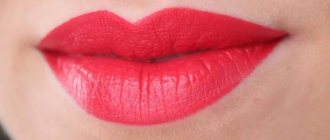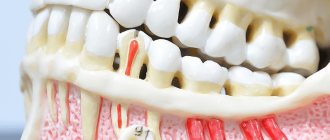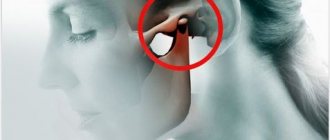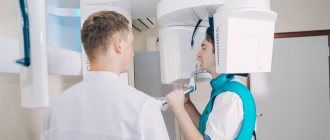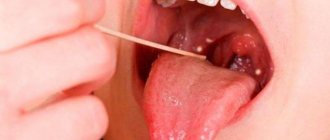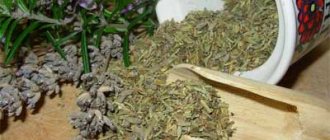Skin damage and wounds are always unpleasant. What can we say about trophic ulcers - companions of severe varicose veins, which are characterized by very sluggish and slow healing due to impaired tissue nutrition. Solcoseryl can help heal such difficult lesions, as well as burns, frostbite, and eye damage.
- Solcoseryl ointment as a face cream
- How to use Solcoseryl and Dimexide for wrinkles
In what forms is the drug available?
The manufacturer produces Solcoseryl in the form of ointment and gel for external use, as well as ophthalmic gel. In addition, this drug is available in injection form.
The active substance in all cases is calf blood extract - hemoderivat. Auxiliary components for each of the release forms are individual. Thus, in addition to the active substance, the solution contains only water for injection, and, for example, the manufacturer adds a number of ingredients to the ointment: white petrolatum, methyl parahydroxybenzoate, cetyl alcohol, etc.
Which is better: Metrogyl Denta or Solcoseryl
Both drugs can be used in the treatment of stomatitis. However, it is better to consider them not as drugs of choice, but from the point of view of a combination of two types of gels. The thing is that stomatitis is most often caused by bacterial infection of the tissues of the oral cavity, which causes the appearance of wounds and ulcers. Metrogyl Denta is an antimicrobial drug with a pronounced antibacterial effect. At the same time, everyone who has encountered stomatitis at least once knows how much one wants to speed up the healing process of ulcers that cause severe pain, especially when eating food. Solcoseryl can force tissue to regenerate as quickly as possible, which ensures prompt healing of wounds.
What kind of medicine is Solcoseryl?
The drug has a beneficial effect on tissue metabolic processes. It improves tissue nutrition in case of damage, and also activates repair and regeneration processes.
Solcoseryl in injection form is used for extensive circulatory disorders (diseases of peripheral veins and arteries, strokes), ointment and jelly are used to treat ulcerative lesions and slow-healing wounds, and the gel is an ophthalmic agent. Thus, each of the release forms performs its own task of restoring damaged tissue.
The rate of absorption and distribution of the drug in the body, as well as the route of its elimination, cannot be determined by methods usual in pharmacology due to the characteristics of the active substance.
According to the results of a study of the drug on animals, the pharmacological effect develops within half an hour after the bolus injection. The therapeutic effect lasts for 3 hours.
Differential diagnosis
Differential diagnosis in the early stages should be carried out with the following diseases [1, 2, 13-15]:
- with neurodermatitis - the epithelium is thickened, compacted, dry, the skin pattern is enhanced with inflammatory papules of a brownish-pink color, the skin is hyperemic, shagreen-like, itching appears and on other parts of the body;
— vitiligo is characterized by a lack of pigmentation, sometimes mild itching, and no atrophic changes;
- for lichen planus - multiple grouped papular rashes with atrophic changes or sclerosis with the formation of keloid-like scars;
- with diabetes mellitus - severe itching of the vulva, the tissues of the external genital organs are swollen, have a “doughy” consistency, and are sharply hyperemic.
As a chronic inflammatory dermatosis with a long course of cycles of “itching-scratching-itching” and the formation of scars, SALV is a triggering factor for carcinogenesis or contributes to it. Apparently, dysregulation of immune processes also predisposes to the development of vulvar malignancy.
Treatment
One of the initial measures is the elimination of irritating factors, careful care of the vulva, treatment of secondary infections, local use of estrogens, which prevents atrophy of the vulva and vagina. This consists of following a diet (excluding spicy, salty, sweet foods, caffeine-containing products, alcohol) and intimate hygiene rules (limiting/excluding soap-containing products, deodorants, synthetic underwear, pads, tampons). For severe manifestations of itching, desensitizing therapy and sedatives are recommended [2].
The most widely accepted and recommended gold standard treatment for PALS is topical application of ultrapotent corticosteroid ointments [16], especially clobetasol propionate 0.05% ointment. The anti-inflammatory properties of clobetasol are most effective in the treatment of SALV, which is reflected in the reduction of inflammation and the prevention of progression of the condition and subsequent scarring. Topical ultrapotent corticosteroids are first-line therapy in the treatment of SALV (mometasone furoate, clobetasol proprionate (Ib, A). Clinical guidelines published in 2014 by the American Association of Child and Adolescent Gynecologists suggest the use of highly active glucocorticoid drugs in the long term as first-line drugs mode.They have the following effects:
- anti-inflammatory effect;
- antihyperplastic effect on the proliferating superficial layers of the skin;
- antiallergic, local analgesic and antipruritic properties;
- inhibitory effect on the functions of cellular and humoral immunity.
Summarizing recommendations for the treatment of SALV in children, taking into account the level of evidence, American colleagues presented them as follows:
1. Therapy in patients with SALV should begin with the use of highly active glucocorticoid drugs. Level II-2 B
.
2. There is limited data justifying the possibility of using immunomodulators both when treatment is ineffective and when patients refuse medications with glucocorticoids. Level II-3 B.
3. SALV should be suspected in children if there are complaints of various disorders of urination and defecation, including dysuria and dyschezia. Level C
.
In patients with SALV, it is necessary to exclude autoimmune diseases. It should also be noted that the diagnosis of SALV in children and adolescents does not necessarily require a vulvar biopsy. A biopsy of the skin of the vulva can be performed only if there are areas of the skin of the vulva and perianal area suspicious for atypia and/or with persistent resistance to therapy.
Patients with SALV require mandatory monitoring every 6-12 months to assess complaints, exclude changes in the architecture of the vulva and perianal area, and also to prevent the possible risk of malignancy [6].
As already noted, in the treatment of SALV, super-potent corticosteroids clobetasol or halobetasol in the form of 0.05% ointments are used. Because relapses can be frequent, prolonged, and can lead to atrophy and scarring, long-term maintenance therapy is recommended and is considered safer. Since there are no randomized controlled studies comparing the potency of steroids, the frequency of use and duration of treatment for each patient is selected on an individual basis. According to the results of a study by M. Gurumurthy et al. [17] reported that in a trial of clobetasol propionate ointment, complete remission was achieved in 66% of patients and a partial response to treatment was obtained in 30%. The scars did not progress. Conversely, there was no improvement in 75% of patients without treatment, and progression of scars was observed in 35% of women [17].
Depending on the severity of the clinical effect, modern topical corticosteroids (TCS) are divided into four groups [3, 18, 19] (Table 1):
Table 1. Current topical corticosteroids
- weakly active drugs (hydrocortisone 1%, prednisolone 0.5%, fluorocinolone acetonide 0.0025%);
- drugs of moderate action (alclomethasone dipropionate 0.05%, betamethasone valerate 0.025%, clobetasol butyrate 0.05%, deoxymethasone 0.05%, flumethasone pivalate 0.02 and 2%);
- potent drugs (betamethasone valerate 0.1%, betamethasone dipropionate 0.025 and 0.5%, butesonide 0.25%, fluorolorolone acetonide 0.025%, fluorcinoid 0.05%, fluorcinolone acetonide 0.025%, triamcinolone acetonide 0.02, 0 .1% and 2%, methylprednisolone aceponate 0.1%, hydrocortisone 17-butyrate 0.1%, mometasone fluorate 0.1%);
- drugs with very strong activity (clobetasol propionate 0.05%, difluorocortolone valerate 0.05%, galcinonide 0.1%).
Corticosteroids include halogenated (fluorinated) and non-halogenated ones [18-20]. Fluorinated corticosteroids (dexamethasone, betamethasone, flumethasone, triamcinolone, clobetasol, fluticasone, fluocinolone, flumethasone), as a rule, have greater anti-inflammatory activity, but more often lead to side effects. Non-halogenated corticosteroids include prednisolone derivatives (mometasone fuorate, methylprednisolone aceponate, hydrocortisone acetate and hydrocortisone 17-butyrate) [3, 20].
The mucous membranes of the vulva are relatively resistant to steroids, which suggests using ointments with maximum steroid potency to achieve a good effect. For 2-3 months they are applied daily, then 3 times a week in a thin layer on the vulva. In the circumference of the anus, where the skin is thinner, the ointment is applied daily for 4 weeks, followed by a transition to three times a week, and later - once or twice a week. The effectiveness of treatment is evidenced by a significant reduction in the number of cracks, erosions, hemorrhages and thickened white lesions. Even with effective treatment, they do not always disappear completely.
Various dosing regimens can be used. One of the most common is the daily use of high and maximum potency steroids: once a day for 3 months. In children, to avoid skin atrophy, TCS is used weekly for 3 months.
The use of TCS twice daily has additional benefit in the onset of lichen sclerosus. Proactive maintenance therapy with twice-daily mometasone furoate ointment 0.1% is effective and safe in maintaining remission and may help prevent the occurrence of malignant changes (Ib, A). The use of 30 g of the maximum potency steroid should continue for 3 months.
In postmenopause, long-term, for 6 months, use of corticosteroids of maximum activity is necessary. Within 12 weeks, in 77-90% of observations, it is possible to achieve significant improvement and disappearance of complaints, and in 23% of observations, complete disappearance of skin changes. Long-term treatment allows you to maintain remission of the disease for a long time. The patient should be monitored throughout her life. For thickened, hypertrophied, treatment-resistant lesions, administration of triamcinolone into them can be effective [1]. The use of TCS in combination with antibacterial and antifungal agents, such as gentamicin or fusidic acid and nystatin or azole antifungals, may be advisable when a secondary infection occurs. They can be used for a short period of time to eliminate infection (IV, C).
An allergic reaction to any corticosteroid ointment may occur after prolonged use. It should be taken into account that TCS can change the manifestations of some skin diseases, which can complicate the diagnosis. In addition, the use of TCS may delay wound healing [21].
When carrying out long-term local corticosteroid therapy in the anogenital area, serious side effects are detected:
- skin thinning;
- “rebound” reaction, which occurs when therapy is suddenly stopped and manifests itself in the form of dermatitis with intense redness of the skin and a burning sensation;
- formation of striae;
— development of fungal infections;
- suppression of adrenal function as a result of systemic absorption.
According to research results [2], it has been proven that all side effects resolve quickly as the activity of topical corticosteroids decreases and the frequency of their use.
The selection of treatment tactics for SALV is based on theoretical assumptions. Therapy for patients suffering from SALV is associated with polypharmacy, as it should help simultaneously eliminate the phenomena of atrophy, hyperkeratosis, reduce microcirculatory disorders, inflammation, and improve the healing of erosions on the skin of the vulva and perineum. However, the inappropriate use of antiseptics, antibiotics, antiviral and other groups of drugs often increases the activity of the pathological process and the spread of SALV. In case of lichen sclerosus, long-term observation is necessary to prevent increasing scarring and early detection of malignant neoplasm, the risk of which is not great, but real. As a rule, treatment leads to long-term remission. Its absence is a reason to doubt the diagnosis. A possible complication is contact dermatitis as a reaction to local treatment or excessively careful hygiene, infection, or the development of vulvar cancer. The ineffectiveness of local corticosteroid therapy is often associated with a violation of the patient's regimen, including due to misunderstanding or the inability to fully apply the ointment due to obesity or arthritis. Scars can be painful.
According to the European guideline for the management of vulval conditions 2016, patients with VALV require treatment [21]. About 10% of patients are not pruritic but have clinical signs of lichen sclerosus and should also be treated (IV, C).
In recent years, there has been a debate among specialists about the need to continue further treatment while relieving the initial symptoms. This is due to the fact that there is no data on disease activity at that time. However, it is indicated that SALV can progress further and lead to scarring, despite the lack of symptoms after prophylactic treatment, patients are indicated for continuous therapy for many years to prevent progression (IV, C).
A 5-year follow-up period showed that continuous treatment with an individually selected corticosteroid prevented the progression of symptoms, further scarring and the development of carcinoma, respectively, in 58% of cases versus 93.3%, 40% versus 3.4%, and 0% versus 4. 7% [21].
One of the representatives of the modern generation of TCS is the domestic combination drug for external use - tetraderm (Table 2).
Table 2. Composition of tetraderma cream for external use According to its pharmacological action, it has anti-inflammatory, antibacterial, wound-healing, antifungal, and glucocorticoid effects.
Pharmacodynamics
The activity of the drug is due to the pharmacological properties of the components included in its composition.
Gentamicin is a broad-spectrum antibiotic from the aminoglycoside group. Has a bactericidal effect, active against gram-negative microorganisms: Pseudomonas aeruginosa, Aerobacter aerogenes, Escherichia coli, Proteus vulgaris, Klebsiella pneumoniae
;
gram-positive microorganisms: Staphylococcus aureus
(coagulase-positive, coagulase-negative and some strains producing penicillinase).
Dexpanthenol is a derivative of pantothenic acid. Stimulates skin regeneration, normalizes cellular metabolism, accelerates mitosis and increases the strength of collagen fibers. Penetrates into all layers of the skin. It has a weak anti-inflammatory effect.
Mometasone is a synthetic CS that has a local anti-inflammatory, antipruritic and anti-exudative effect, induces the release of proteins that inhibit phospholipase A2 and lipocortins, which control the biosynthesis of inflammatory mediators (prostaglandins and leukotrienes, cellular inflammatory mediators) by inhibiting the release of their common precursor - arachidonic acid.
Econazole is a synthetic imidazole derivative. It has an antifungal and antibacterial effect, inhibits the biosynthesis of ergosterol, which regulates the permeability of the cell wall of microorganisms. It is easily soluble in lipids and penetrates well into tissues; it is active against dermatophytes Trichophyton, Microsporum, Epidermophyton,
yeast-like fungi of the genus
Candida, Corynebacterium minutissimum,
as well as
Malassezia furfur (Pityrosporum orbiculare)
, which causes pityriasis versicolor, and some gram-positive bacteria (streptococci, staphylococci).
Indications for use of the drug Tetraderm
Treatment of dermatoses of inflammatory origin with concomitant bacterial and mycotic infection or a high probability of secondary infection (simple and allergic dermatitis, atopic dermatitis (including diffuse neurodermatitis), limited neurodermatitis, eczema, dermatomycosis (dermatophytosis, candidiasis, pityriasis versicolor), especially when localized in the groin area and large folds of skin; simple chronic lichen (limited neurodermatitis).
Directions for use and doses
Externally.
The cream is applied to the affected areas of the skin in a thin layer, gently rubbing, 2 times a day until a positive clinical result is achieved. The duration of treatment is individual, depends on the size, location of the lesion and the severity of the disease and is usually 1-2 weeks. It is not recommended to use Tetraderm for more than 4 weeks.
Second-line therapy for SALV
Topical calcineurin inhibitors (TCIs) - pimecrolimus, tacrolimus - have a dermatotropic, immunosuppressive, anti-inflammatory local effect, specifically bind to the cytosolic receptor macrophilin-12 of T-lymphocytes and inhibit calcium-dependent phosphatase - calcineurin. Currently, TICs are recommended as second-line therapy for SALV. Pimecrolimus cream 1% is an immunosuppressant that inhibits T cell activation by blocking the transcription of early cytokines, and thus significantly reduces the itching, burning and inflammation associated with SALV. In addition, it prevents the release of pro-inflammatory cytokines, mediators of inflammation from mast cells in vitro
in response to stimulation by IgE antigen, does not affect keratinocytes, fibroblasts and endothelial cells.
Although TCIs can provide effective symptomatic relief, topical clobetasol is superior to pimecrolimus in reducing inflammation and improving clinical symptoms. However, pimecrolimus cream has a more acceptable safety profile and does not cause skin atrophy, although its use is associated with an increased risk of complications due to suppression of local immunity. As a result, TCI should be administered under the supervision of a specialist who can monitor the potential risk of malignancy of SALV. Given the proven effectiveness and safety of topical corticosteroids, experts agree that TICs should be reserved for cases of SALV not responding to topical corticosteroids [2].
TIC is used externally 2 times a day, applied in a thin layer to the affected areas of the skin and gently rubbed until completely absorbed. Treatment is continued until symptoms disappear completely. At the first signs of relapse, therapy should be resumed. If symptoms persist for 6 weeks, the patient's condition should be re-evaluated.
The most famous forms of TEC:
1. Tacrolimus - Protopic ointment 0.03 and 0.1%. Undesirable effects of this drug include: burning and itching sensation, redness, pain, irritation, rash at the application site, development of folliculitis and acne. Isolated cases of malignancy (skin and other types of lymphomas, skin cancer) have been recorded.
2. Pimecrolimus - Elidel cream 1%. Side effects include a burning sensation at the site of application of the cream, the development of impetigo and skin infections, rhinitis, and urticaria.
The most relevant seems to be 0.03% tacrolimus ointment for the effective treatment of children with anogenital lichen sclerosus 2 times a week, while reducing relapses is possible (IIIA, B). A comparison of pimecrolimus (1% cream) and clobetasol propionate (0.05%) cream showed an improvement in the symptoms of itching, burning, pain 12 weeks after the onset of vulvar lichen sclerosus, while clobetasol was used to quickly relieve the inflammatory process (Ib, A) . Other studies of pimecrolimus showed that 42% of patients were in “complete remission” after 6 months of use (IIb, B). Local irritation was the most common side effect with tacrolimus and pimecrolimus. The long-term risks of TIC use still need to be studied, as there are concerns about the possibility of an increased risk of malignancy due to local immunosuppression with long-term SALV therapy [21].
Emollients
One of the important components of SALV therapy are emollients ( eng.
. emollient - emollient) softening and moisturizing agents. These products do not contain potential allergens such as propylene glycol and lanolin, can minimize local inflammation, increase the moisture content of the stratum corneum of the skin, strengthen weakened skin barrier function and reduce subclinical inflammation [2].
According to the results of a study conducted by T. Simonart et al. [22], it was found that more than 50% of women who used a daily moisturizer along with topical corticosteroids maintained remission for 58 months. And more than 2/3 of women stopped using topical corticosteroids while remaining on emollients for a long time.
Based on their source of origin, emollients are divided into plant (natural), chemical and synthetic. Plant emollients are, first of all, natural oils. They soften the skin and protect it, making it elastic. They are absolutely harmless. These include popular cosmetic oils: peach, olive, jojoba. Chemical emollients include paraffin, petroleum jelly and ointments based on it (“Propolisnaya”, “Calendula”), and mineral oils. Synthetic emollients are produced industrially by carrying out various reactions and mixing fatty acids, esters and other components. These are cyclomethicones, dimethicones and synthetic oils. The most well-known and studied are the products from the Emolium, Locobase Ripea, and Lipikar line.
Effects of emollients:
— begin to act immediately after application to the skin, reducing moisture evaporation due to the occlusion effect;
— with further penetration into the stratum corneum, the lipids replace the missing lipids of the epidermis and maintain skin moisture for several hours (medium-term effect);
- lipids reach the deeper layers of the skin and enter the empty “storage areas” - lamellar bodies; if necessary, they are released to maintain the water-lipid balance of the skin (long-term effects).
Estrogen-containing drugs
This group of funds
has a proliferative effect without having a systemic effect on the endometrium and mammary glands [23, 24]. Orniona cream is one of the most modern domestic preparations that contains estriol, an analogue of the natural female hormone. Estriol is used to correct estrogen deficiency in pre- and postmenopausal women. Effective in the treatment of urogenital disorders. In the case of atrophy of the epithelium of the vagina and cervix, which occurs with SALV, estriol stops these disorders, helps restore normal microflora and physiological pH of the vagina, thereby increasing the resistance of the vaginal epithelium to infectious and inflammatory processes. Unlike other estrogens, estriol interacts with the nuclei of endometrial cells for a short period of time, so that with daily use of the recommended daily dose, endometrial proliferation does not occur. Thus, there is no need for cyclic additional administration of progestogens, and “withdrawal” bleeding is not observed in the postmenopausal period.
Indications for use:
- hormone replacement therapy (HRT) for the treatment of atrophy of the mucous membrane of the lower urinary and genital tract associated with estrogen deficiency in postmenopausal women;
— pre- and postoperative therapy in postmenopausal women who are about to undergo or have already undergone surgery via vaginal access;
- for diagnostic purposes in case of unclear results of cytological examination of the cervical epithelium against the background of atrophic changes (as an adjuvant).
Contraindications for use:
- established hypersensitivity to the active substance or to any of the excipients of the drug;
- untreated endometrial hyperplasia;
- established, known or suspected breast cancer;
- diagnosed or suspected estrogen-dependent tumors (for example, endometrial cancer);
- bleeding from the vagina of unknown etiology;
- thrombosis (venous and arterial) and thromboembolism currently or in history (including deep vein thrombosis, pulmonary embolism, myocardial infarction, stroke), cerebrovascular disorders;
- conditions preceding thrombosis (including transient ischemic attacks, angina) currently or in history;
- congenital or acquired predisposition to the development of arterial or venous thrombosis, for example deficiency of protein C, protein S or antithrombin III;
- liver disease in the acute stage or a history of liver disease, after which liver function tests have not returned to normal;
- porphyria;
- pregnancy and breastfeeding.
Directions for use and doses
Ornion cream should be inserted into the vagina before bed using a calibration applicator. One dose (when filling the applicator to the ring mark) contains 0.5 g of Ornion cream, which corresponds to 0.5 mg of estriol. The course of treatment consists of prescribing estriol at a dose of 500 mcg per day for 2-3 weeks daily, then switching to a maintenance dose 1-2 times a week. A small part of a single dose is applied directly to the vulva, and the rest into the vagina with a dispenser. With the detachment of hyperplastic plaques, there is increased pain that passes quickly.
Ornion cream can be used both in women with a history of hysterectomy and in women with an intact uterus. When carrying out HRT for the treatment of atrophy of the mucous membrane of the lower urinary and genital tract associated with estrogen deficiency in postmenopausal women, one intravaginal cream is administered daily for no more than two weeks until symptoms alleviate. Then the dose is gradually reduced to a maintenance dose depending on the clinical picture (for example, one injection 2 times a week).
For pre- and postoperative therapy in postmenopausal women who are about to undergo or have already undergone surgery via vaginal access,
- Magazines
- Subscription
- Books
- For advertisers
- Delivery / Payment
- About the publishing house
- Contacts
- Privacy Policy
- Publishing house "Media Sphere"
Registration
- Telephone
- +7 (495) 482-4118
- +7 (495) 482-0604
- +8 (toll-free number for subscription questions) Mon-Fri from 10 to 18
- Mailing address
- Publishing house "Media Sphere",
- PO Box 54, Moscow, Russia 127238
- [email protected]
- © 1998-2022
+7 (495) 482-4118, +7 (495) 482-0604
- PO Box 54, Moscow, Russia 127238 "Media Sfera Publishing House"
- [email protected]
© 1998-2022
- Publishing house "Media Sphere"
Email confirmation
An email has been sent with a link to confirm your email. Follow the link from the email to complete registration on the site.
Email confirmation
Log in to the site using your account in one of the services
Registration for legal entities
To come in
Register
Indications
For each release form of Solcoseryl there are individual indications.
In the form of injections, the drug is prescribed when a patient is diagnosed with:
- occlusive peripheral artery disease grade 3 or 4;
- disturbances of venous blood flow with trophic lesions;
- strokes and traumatic brain injuries, which led to disruption of metabolic processes in the brain.
Ointment and gel for external use are used in complex treatment:
- minor abrasions and wounds;
- mild to moderate burns, frostbite;
- difficult-to-heal skin lesions: trophic ulcers, bedsores.
Ophthalmologists recommend the use of Solcoseryl eye gel to patients for the treatment of:
- injuries of the cornea and conjunctiva, their erosive lesions;
- scars after ophthalmological operations;
- eye burns of various types;
- dystrophic lesions of the cornea.
In addition, this gel is indicated for use in case of discomfort when wearing contact lenses and to reduce the time of getting used to them.
How to minimize discomfort
You should start using antiherpes medications as soon as you feel a tingling sensation. Medicines will not get rid of the virus, but they will stop its development and speed up recovery. There are drugs that prevent the development of the virus: tablets, ointments for external use, which help heal blisters and ulcers and reduce discomfort.
When applying the ointment, use cotton swabs to avoid transferring the virus from your lips to the skin of your fingers.
Herpes requires the attention of specialists! A “cold” on the lips can be a symptom of serious diseases: a sharp decrease in immunity, cancer, HIV infection.
If you are suffering from relapses of herpes, consult a doctor. A specialist will not only save you from unnecessary worries and eliminate health hazards, but will also help you choose a comprehensive program for the prevention and treatment of herpes.
In order to make an appointment with an immunologist or dermatologist for a program for the diagnosis and treatment of herpes, call the Family Doctor clinic (clinic hours: Mon-Fri from 8.00 to 21.00, Sat-Sun from 9.00 to 20.00), or sign up for reception and diagnostics via online registration form
Side effects
The use of an injection solution in rare cases can lead to the development of allergic reactions, including anaphylactic shock. In this situation, you should immediately stop using the drug and prescribe symptomatic therapy in the form of antihistamines.
In addition, the process of performing the injection itself can be painful for the patient due to the potassium it contains.
When using the ointment, some patients may experience a burning sensation at the site of application.
Solcoseryl eye gel may cause short-term irritation, which is not an indication to discontinue treatment. The development of allergic reactions when using external forms of the drug is extremely rare.
Herpes “wakes up” when immunity decreases
Causes of recurrence of herpes on the lips: stress or emotional distress; various other diseases, in particular colds, flu, diabetes, HIV; poisoning or intoxication; drinking alcohol, caffeine and smoking; excessive ultraviolet radiation; hypothermia or overheating; onset of menstruation; overwork and exhaustion; poor nutrition/diet or stomach upset; other factors individual to each person.
After “awakening,” the virus travels back to the skin. As the virus moves through a nerve, it causes inflammation of the nerve tissue.
The development of herpes can be divided into several stages. At the first stage, the person feels unwell. At the site where the “fever” appears, there is pain, tingling, and the skin turns red. At the inflammation stage, a small painful blister filled with fluid forms. After some time, the bubble bursts and a colorless liquid containing billions of viral particles flows out of it. An ulcer appears in its place. At the final stage, the ulcer becomes covered with a crust.
Most often, herpes appears on the lips, but lesions can also appear on the face, in the ears or in the mouth.
Mode of application
Solution
Solcoseryl in the form of a solution is recommended to be administered intravenously slowly in the form of an injection or by drip, having previously diluted it with saline solution or 5% glucose solution. If intravenous administration is difficult, intramuscular injection is allowed.
For the treatment of venous insufficiency, the drug is prescribed for up to a month, combining it with the application of an external gel or ointment to the area of trophic ulcers.
Patients who have suffered a stroke are prescribed a course of treatment with Solcoseryl for 5 weeks. When treating traumatic brain injuries, short courses lasting 5 days are prescribed.
Ointment and gel
Ointment and gel for external use are applied directly to the wound. Before using them, the wound surface is thoroughly disinfected. In the presence of purulent discharge, surgical treatment may be required.
The gel is used to treat wet, fresh wound surfaces. When the affected area begins to epithelialize, granulation tissue appears and the wound dries out, you should switch to using Solcoseryl in the form of an ointment.
The course of treatment with external forms of the drug is carried out until the wound surface is completely healed and a scar is formed.
Ophthalmic gel
The eye gel is instilled into the conjunctival cavity 3-4 times a day, one drop at a time. In some cases, it is possible to use the drug hourly. The course of treatment lasts until complete recovery.
Pharmacological action of the ointment
The pharmacological properties of the drug have not been fully studied. However, during the studies it was proven that solcoseryl has the following properties:
- in case of oxygen deficiency, its delivery to damaged cells is ensured;
- glucose transfer in metabolic disorders;
- is a catalyst for the formation of intracellular ATP;
- ensures the storage of energy in mitochondria generated during the transformation of nutrients;
- supports cells during nutritional deficiencies by supplying high-energy phosphates;
- prevents or prevents atypical changes with minor cell damage;
- “launches” the process of natural restoration of cells and tissues;
- activates the proliferation (division and formation) of fibroblasts that form the framework of connective fibers, and the formation of collagen filaments in the walls of blood vessels.
The ointment is widely used in cosmetology, gynecology, ophthalmology, and dentistry.
Main indications for use of the product
Ointment with solcoseryl is recommended for:
- minor skin damage in the form of abrasions;
- burns (except chemical) 1-2nd degree, which occur without the formation of exudate;
- frostbite of the 1st-2nd degree in the absence of wound weeping;
- psoriasis;
- to eliminate dry calluses and corns;
- to prevent the formation of scars after laser removal of warts or moles;
- atopic and seborrheic dermatitis;
- “sticking” in the corners of the mouth;
- drying of the nasal mucosa;
- in the treatment of wounds that heal poorly, including trophic ulcers and bedsores, after removal of dead tissue.
As a rule, a gel with solcoseryl is first applied to treat the wound surface with the separation of exudate. After the first signs of wound granulation appear, therapy is continued with the drug in the form of an ointment.
Differences between the ointment form of solcoseryl and the gel form
Pharmacies offer 2 forms of the drug intended for external local use. How do they differ and is it necessary to pay attention to such nuances?
The main differences between the forms are due to the excipients. Thus, solcoseryl gel does not contain fatty bases, which is why it is quickly washed off with warm water and removed from the surface of the skin. Due to this, it is the gel form that stimulates the formation of granulation tissue and the elimination of wound exudate.
When the wound dries out and signs of granulation appear, it would be more appropriate to use ointment. The fatty base of the drug forms a protective film on the surface of the wound, so the healing process is noticeably faster. In addition, solcoseryl ointment softens the surface of the wound, thereby avoiding the appearance of scars and other skin defects.

